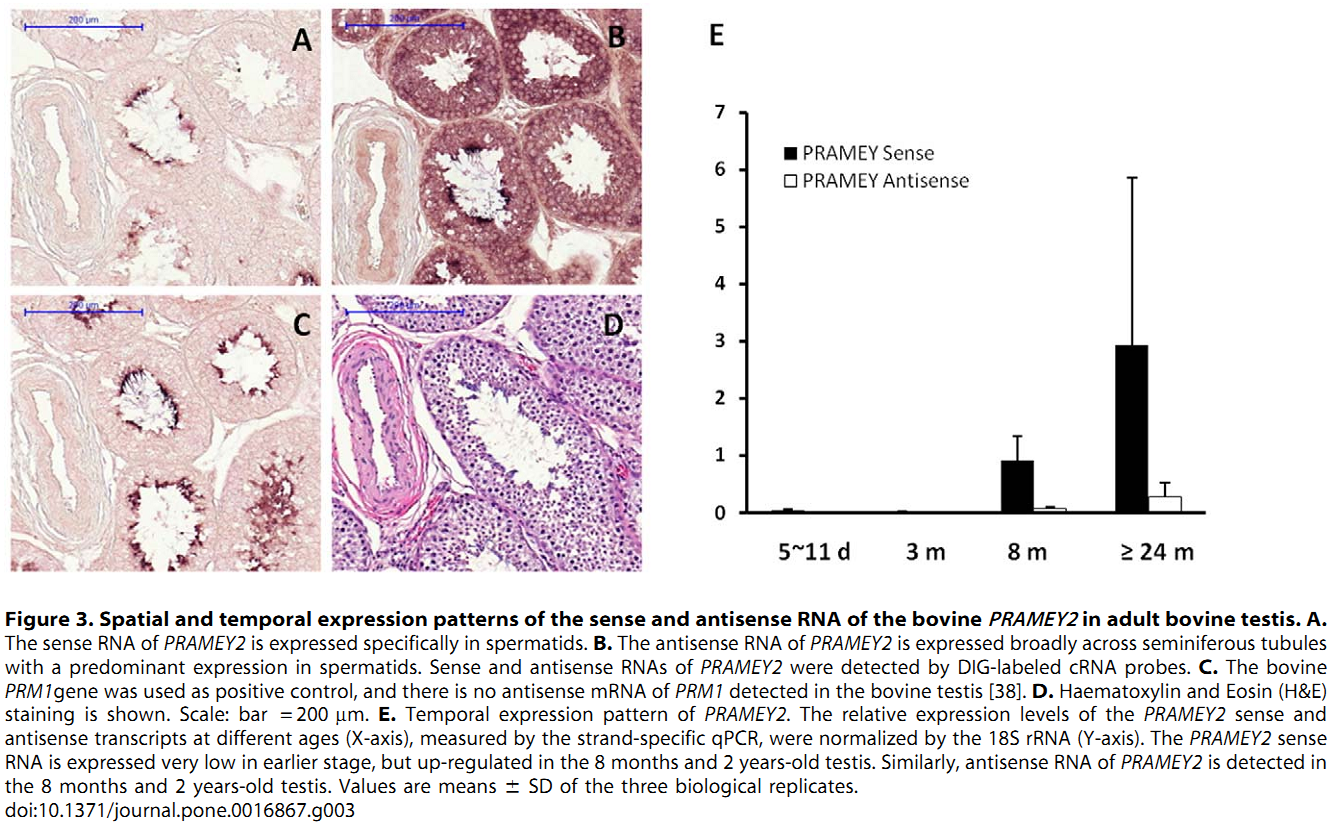| Tag | Content | |||
|---|---|---|---|---|
SG ID |
SG00000030 |
|||
UniProt Accession |
||||
Theoretical PI |
6.25
|
|||
Molecular Weight |
56439 Da
|
|||
Genbank Nucleotide ID |
||||
Genbank Protein ID |
||||
Gene Name |
Bt.75230 |
|||
Gene Synonyms/Alias |
||||
Protein Name |
||||
Protein Synonyms/Alias |
SubName: Uncharacterized protein |
|||
Organism |
Bos taurus (Bovine) |
|||
NCBI Taxonomy ID |
9913 |
|||
Chromosome Location |
|
|||
Function in Stage |
||||
Function in Cell Type |
||||
Description |
Temporarily unavailable |
|||
The information of related literatures |
1. T. C. Chang, Y. Yang, H. Yasue, A. K. Bharti, E. F. Retzel and W. S. Liu (2011) The expansion of the PRAME gene family in Eutheria. PLoS One 6(2): e16867. Abstract The PRAME gene family belongs to the group of cancer/testis genes whose expression is restricted primarily to the testis and a variety of cancers. The expansion of this gene family as a result of gene duplication has been observed in primates and rodents. We analyzed the PRAME gene family in Eutheria and discovered a novel Y-linked PRAME gene family in bovine, PRAMEY, which underwent amplification after a lineage-specific, autosome-to-Y transposition. Phylogenetic analyses revealed two major evolutionary clades. Clade I containing the amplified PRAMEYs and the unamplified autosomal homologs in cattle and other eutherians is under stronger functional constraints; whereas, Clade II containing the amplified autosomal PRAMEs is under positive selection. Deep-sequencing analysis indicated that eight of the identified 16 PRAMEY loci are active transcriptionally. Compared to the bovine autosomal PRAME that is expressed predominantly in testis, the PRAMEY gene family is expressed exclusively in testis and is up-regulated during testicular maturation. Furthermore, the sense RNA of PRAMEY is expressed specifically whereas the antisense RNA is expressed predominantly in spermatids. This study revealed that the expansion of the PRAME family occurred in both autosomes and sex chromosomes in a lineage-dependent manner. Differential selection forces have shaped the evolution and function of the PRAME family. The positive selection observed on the autosomal PRAMEs (Clade II) may result in their functional diversification in immunity and reproduction. Conversely, selective constraints have operated on the expanded PRAMEYs to preserve their essential function in spermatogenesis. PMID: [21347312] Back to Top |
|||
Figures for illustrating the function of this protein/gene |
|
|||
Function |
||||
Subcellular Location |
||||
Tissue Specificity |
||||
Gene Ontology |
|
|||
Interpro |
||||
Pfam |
||||
SMART |
||||
PROSITE |
||||
PRINTS |
||||
Created Date |
18-Oct-2012 |
|||
Record Type |
Experiment identified |
|||
Protein sequence Annotation |
||||
Nucleotide Sequence |
Length: bp Go to nucleotide: FASTA |
|||
Protein Sequence |
Length: 499 bp Go to amino acid: FASTA |
|||
The verified Protein-Protein interaction information |
| |||
Other Protein-Protein interaction resources |
String database |
|||
View Microarray data |
Temporarily unavailable |
|||
Comments |
||||
